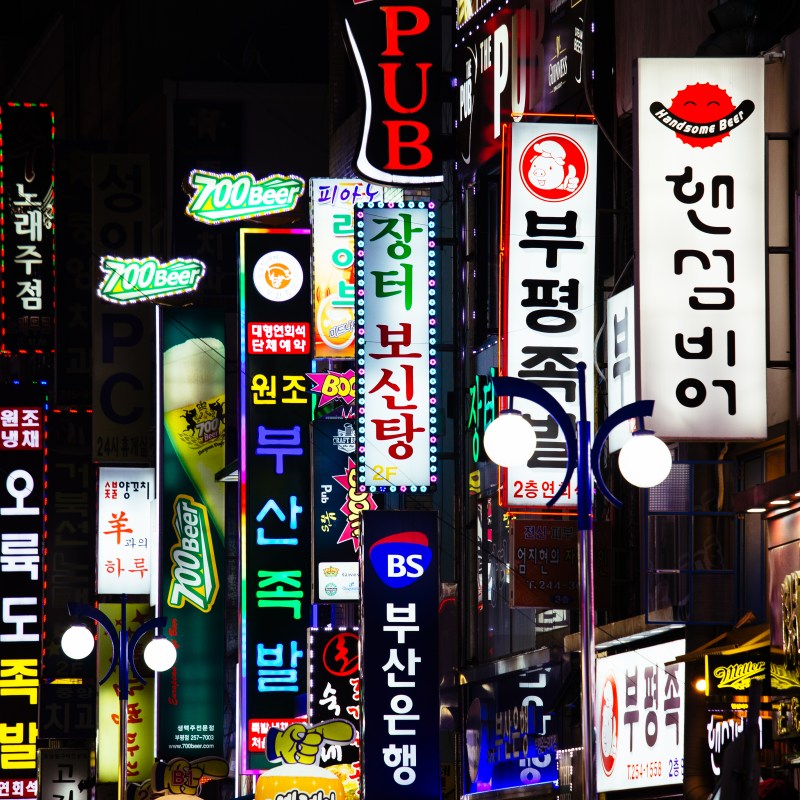
One of the most nerve-wracking parts of travel is navigating language barriers.
Videos by TravelAwaits
Language barriers can have a profound effect on your trip. At best, things get a little uncomfortable at times. Maybe you order the wrong dish or accidentally tell someone they’re welcome instead of thanking them.
At worst, you could board the wrong train, offend someone important, or wind up in a place where tourists aren’t welcome. You might even be the perfect target for a scam, whether being overcharged for a taxi or sold a fake ticket.
These risks are present any time you venture to a new linguistic zone—but they’re even more apparent when you visit a place that uses a non-Latin alphabet. When you can’t pronounce or even attempt to pronounce a word, it’s easy to feel confused, isolated, and out of place.
Even researching where to go, figuring out where to stay, and what sorts of experiences to book can feel like a part-time job when you’re heading to a destination that doesn’t use the Latin alphabet.
Ready to level up your game? Here’s how to search for places in destinations that use a non-Latin alphabet.
Popular destinations that use another alphabet
Americans heading to these countries are going to navigate a non-Latin alphabet for part of their trips. Additionally, you might want to search for places using the local alphabet to find spots that locals like. If only tourists use the Latin alphabet, your results might focus on tourist trap locations.
- Japan. The primary Japanese alphabet is based on a blend of adapted Chinese characters (kanji) and native syllables, but it’s a complex operation. And there are two other alphabets in play. If you want to learn about the Japanese alphabets, start here.
- China. Chinese characters are used to write various Chinese languages, along with parts of other alphabets like Japanese, Korean, and Vietnamese. (The primary language spoken in China is Mandarin.)
- South Korea. The Korean alphabet is known as Hangul. Like Japanese, it relies on certain Chinese characters along with a native syllabic writing system.
- UAE. The official language of the United Arab Emirates is Arabic, but locals speak an Emirati version. The alphabet is called the abjad, which is written right to left in a cursive style.
- Thailand. The Thai alphabet is usually called Thai script, which is based on consonants and vowels that create unique tones.
- Greece. Don’t forget that some European countries use non-Latin alphabets, including Greece. (The other common alphabet is Cyrillic, used in Russia and Ukraine.)
How to search for places using another alphabet
The simple way: translate your searches
If you’re in a bind and want to find a great sushi place in Tokyo, don’t search for sushi using the Latin alphabet. Instead, use a translation app to look for sushi in the Japanese alphabet or use Google’s voice search feature.
The former can help you transliterate Japanese words into written form (in either alphabet) in case you know the word for a place, but don’t know how to spell it in either language.
Just know that there’s not much recourse for you to check your work when you search for places using self-guided translation methods. If you’re putting together an itinerary this way, I’d highly recommend you ask your hotel concierge to double-check your work.
The official way: use the tourism department
The most straightforward way to get reliable information about a destination that uses a different alphabet is from the tourism authority. English language resources aren’t hard to find for most countries around the globe, meaning almost every tourism authority has an English language page available.
I recommend starting here when you’re visiting a new place that uses a different alphabet. Not only can you read through the pages to find great recommendations, but these channels are often suited toward your cultural needs, as well.
In other words, you should be able to quickly glean which neighborhoods, sites, and restaurants are ideal for tourists like you.
The informal way to search for places using another alphabet: use forums and social media
The most common way for modern travelers to figure out where to go is from word of mouth. From travel creators to Reddit forums, direct recommendations on what to do and what not to do are your best friend.
As per my advice on trawling forums, always look for posts from travelers like you—they’ll have the most relevant tips.
If you want to lean on social media, you can follow accounts that revolve around your destination. Most posts showcase the best things to do and where to find them. Just make sure you’re looking at content with a keen eye; it’s easy to romanticize travel adventures, especially when you’re getting paid to make travel look easy.
The studious way: read travel guides
You can still rely on written travel guides when it comes to uncovering new information about your next destination—and there’s no better time to dig in than when you’re heading into the unknown. Lonely Planet, for example, still produces physical (and digital) guides for most destinations in the world.
